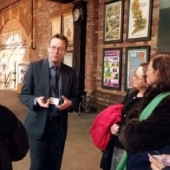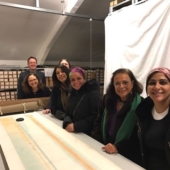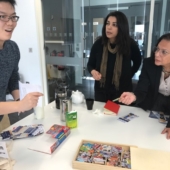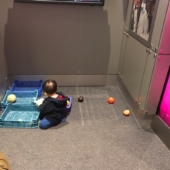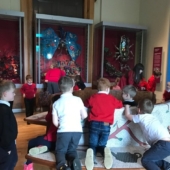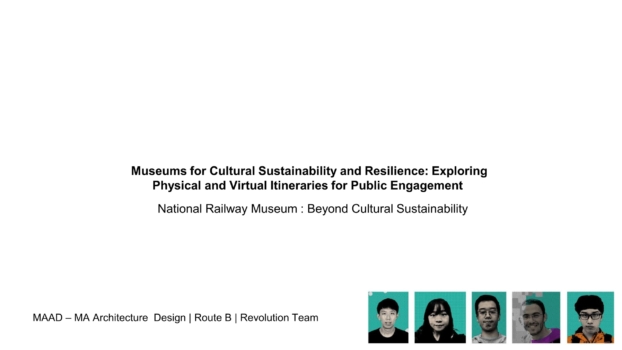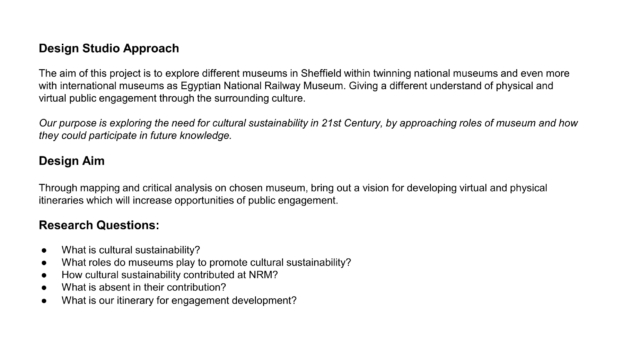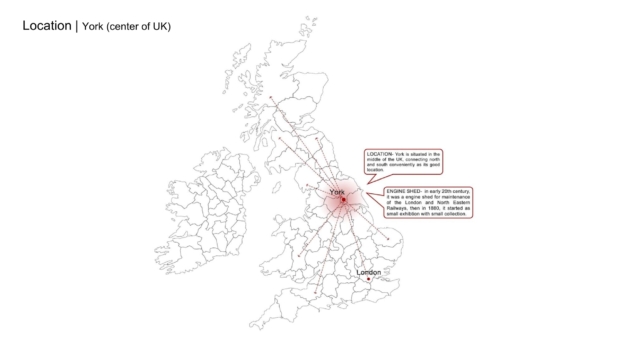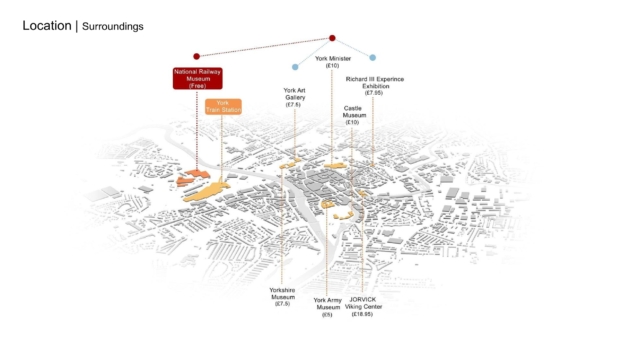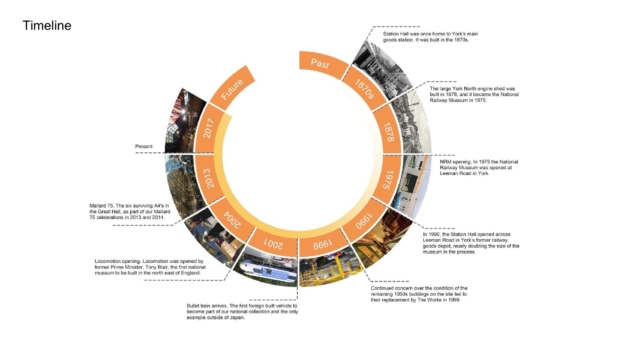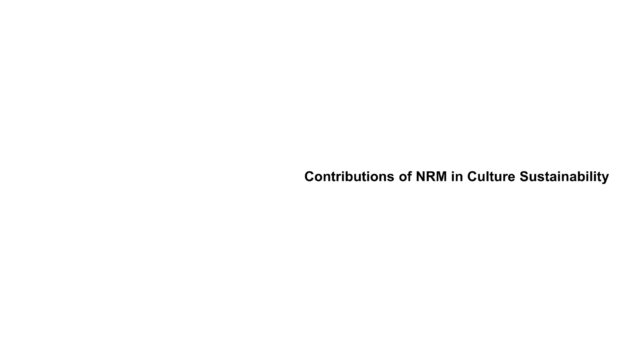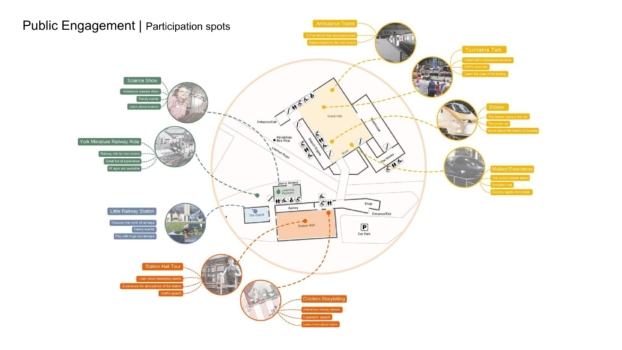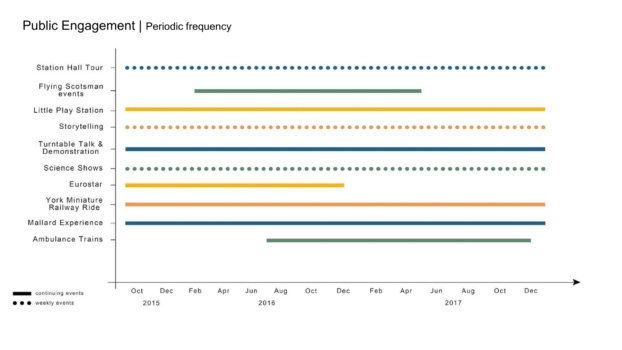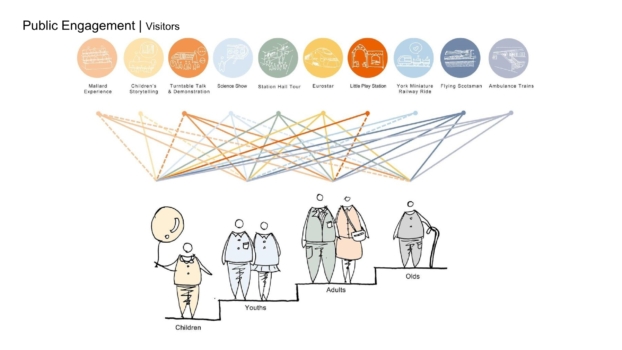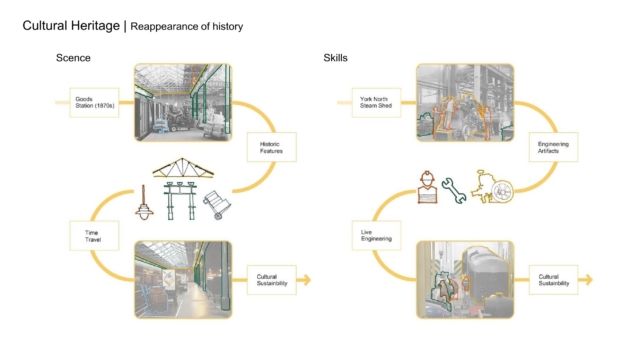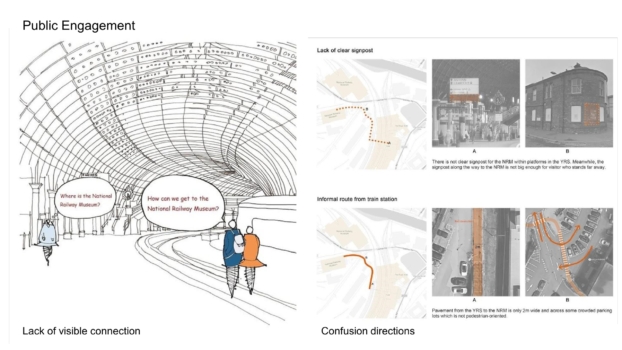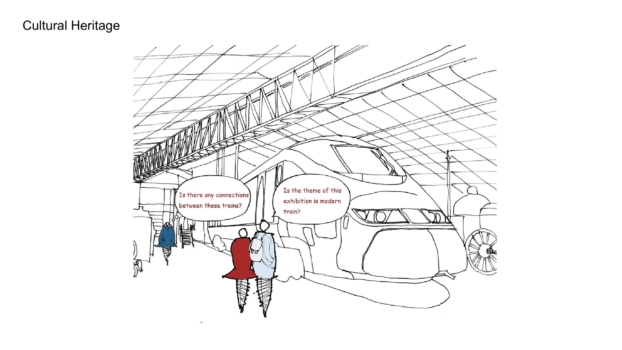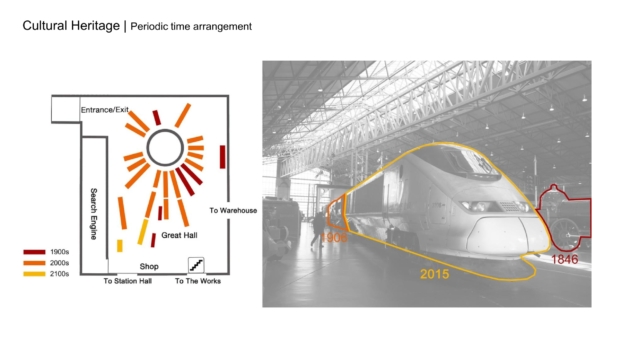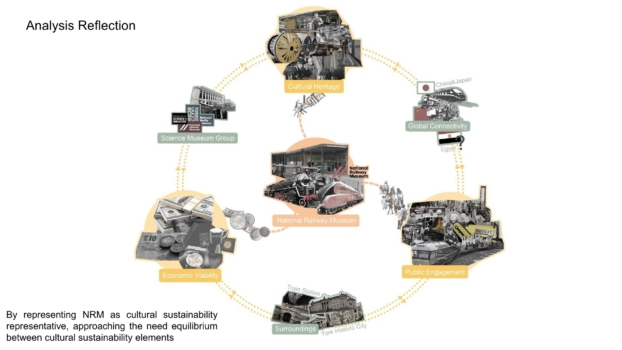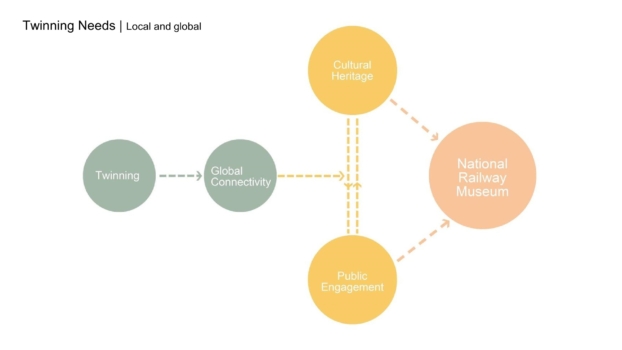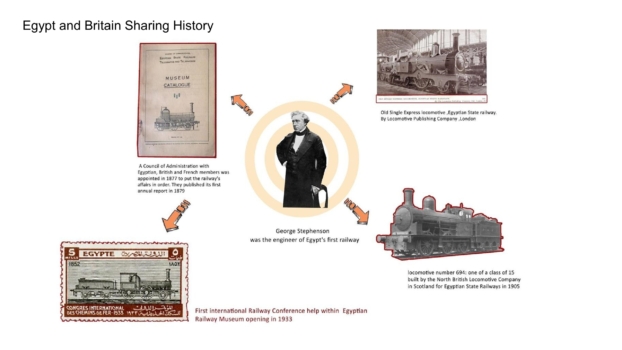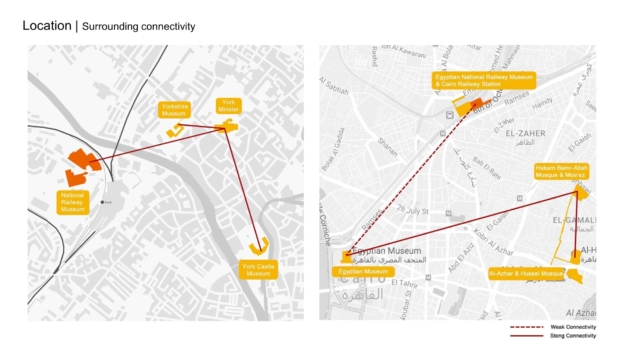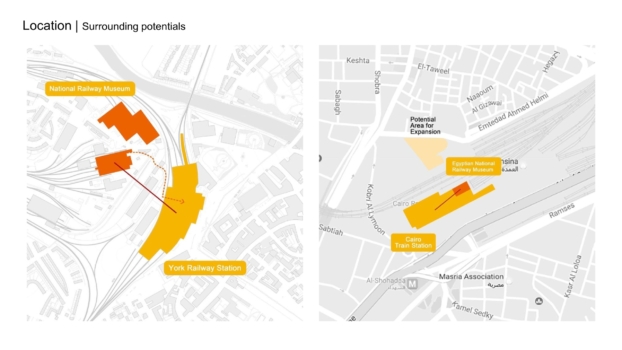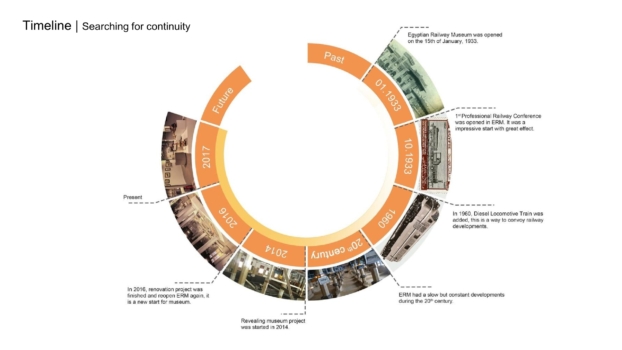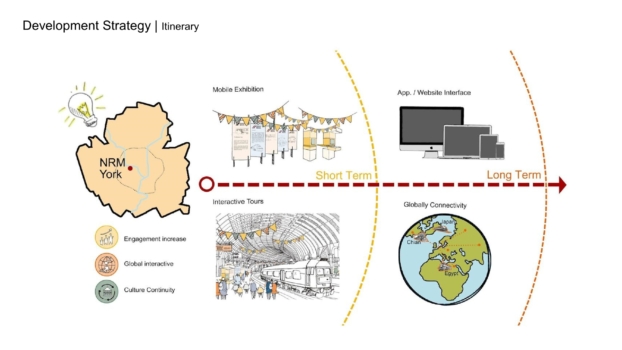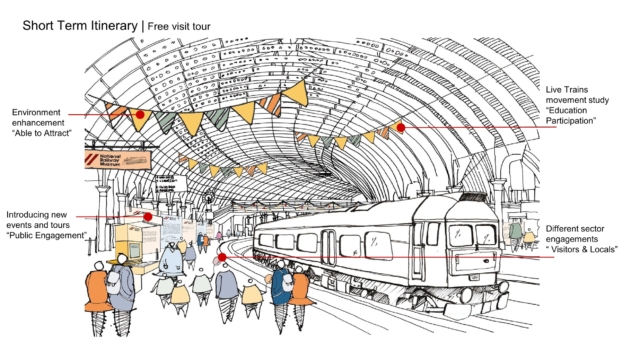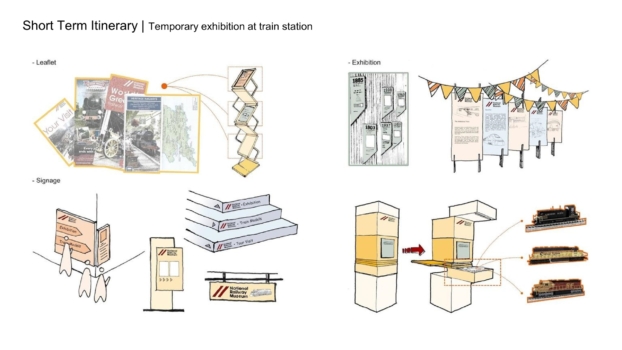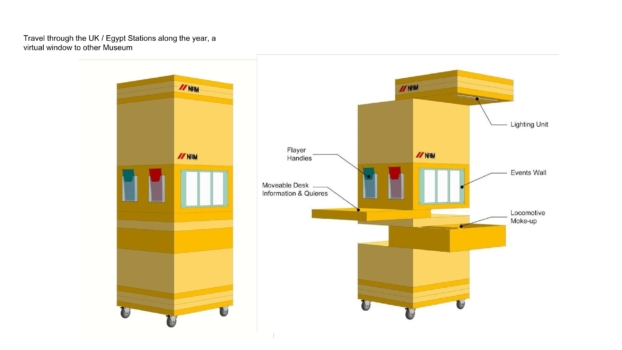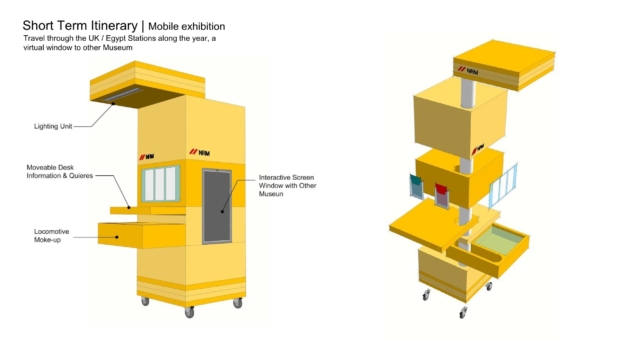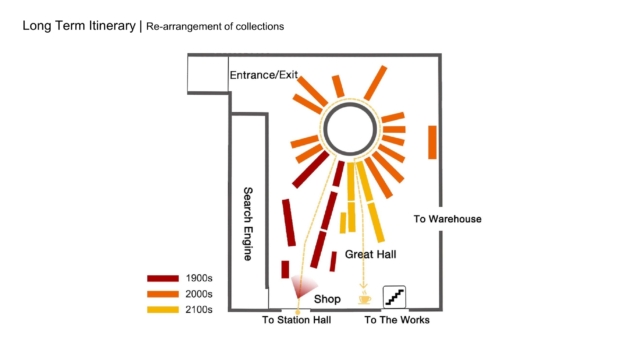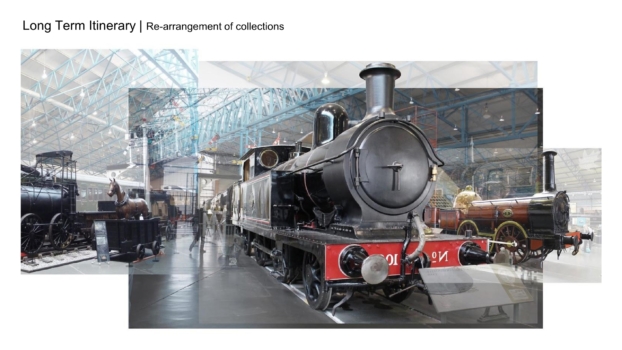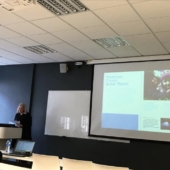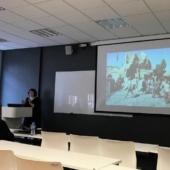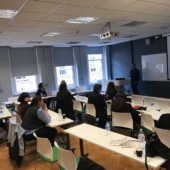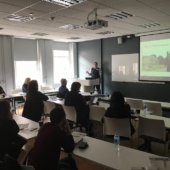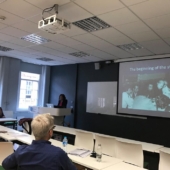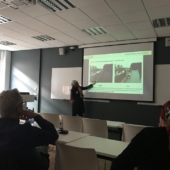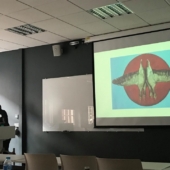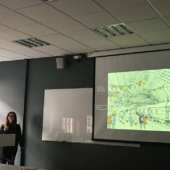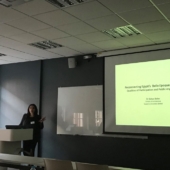The BECAMI International workshop held at Sheffield University took place over a period of three days: 27th and 28th of February and 1st March 2017.
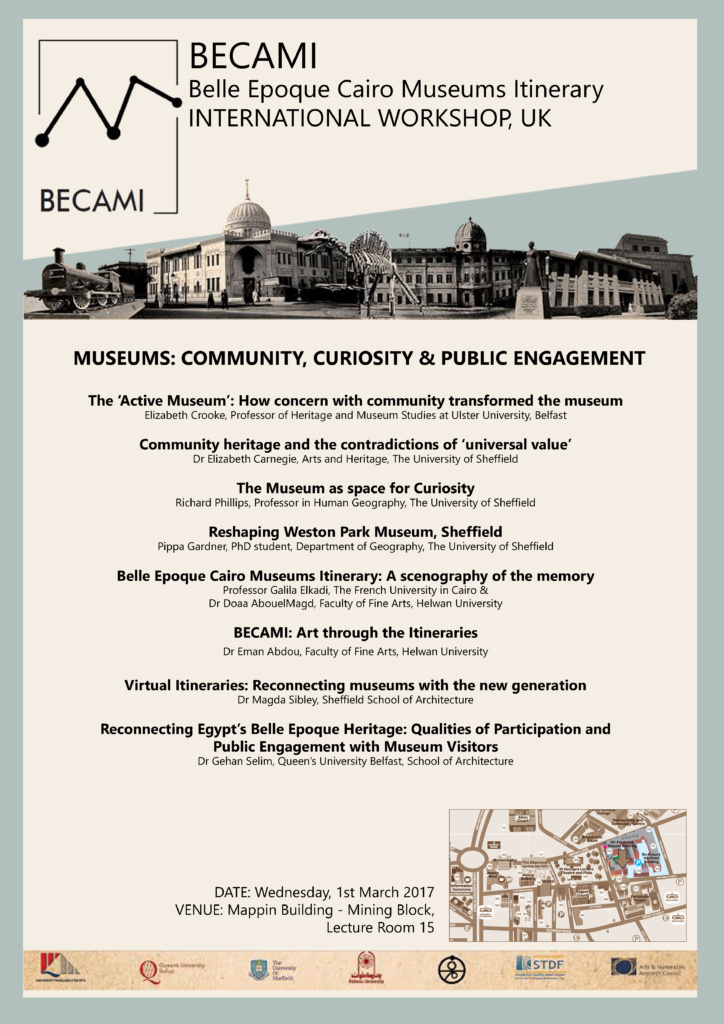
| BECAMI organizing team: | Dr. Magda Sibley (UK Principal investigator) |
| Meryem Gurel (UK Facilitator) | |
| Ralph Mackinder (Web designer) |
Day One
Visiting the National Railway Museum in York
The National Railway Museum in York is part of the British Science Museum Group. Its collection on historic railway vehicles and other objects along with texts, prints and drawings are significantly important as it shows the rail transport in Britain and its impact on society. The Museum won several awards, including the European Museum of the Year Award in 2001.
The Becami team visited the National Railway Museum in York and consulted its archive, which holds very interesting material related to the railways in Egypt. A first meeting was held with the director, Mr. Paul Kirkman and the Senior Curator of Rail, Transport and Technology, Mr.Anthony Coulls, to launch the discussions on a twinning proposal with the Egyptian Railway museum, and a possible collaboration between two national railway museums, which will form an innovative base, linking shared histories of railways between the UK and Egypt. Linking fragments of shared histories through the archives of both museums, will allow more integrated research. The links between archival materials and locomotives specially the ones designed by George Stephenson in both museums, provide an interesting twinning opportunity particularly as the development of the first Railway network in North Africa was introduces by the British in Egypt. Furthermore, Railways and Nations is an ongoing research at the National Railway museum in York and the proposed twinning activities with the Cairo railway museum falls within this ongoing research partnership development interest. Dr Oliver Betts, Research Fellow at the National Railway Museum was also invited to attend Becami International workshop.
Day Two
MA students’ presentation on Twinning
The MA students of Dr. Sibley presented their architectural studio work for the twinning of the York and Cairo Railway Museums. The presentation focused on:
- Identified common issues
- Both museums are located next to a major railway station
- Both are invisible to the public from the railway station
- The need to develop installations and sign posts to make both museums visible to the public of the railway stations
To see the students’ proposal click on the images above
Visit to Western Park Museum in Sheffield
The team visited the Western Park Museum to explorer the different activities held in the museum for children.
Day Three
A one-day International Workshop was held at Sheffield University, with the Becami team and invited speakers from the UK, to provide a platform to exchange ideas on the best practice in public engagement and museum twinning.
Museums and communities: Prof. Elizabeth Crooke
“The ‘Active Museum’: How concern with community transformed the museum”
The presentation illustrated the sustained interest in the concept of community and how it has had a major impact on the practice of museums and how we think about museum meanings. The connection between museums and community is threefold: the museum as symbol of community, museums and community policy; and the use of the museum as a site of community action. This paper explores contemporary approach to see the museum- community connection as a means to uncover different stories about collections; to enable new forms of engagement inside and outside the exhibition space and encourage the development of collaborative working practices that are more representative of the multitude of stories and experiences beyond the museum. This paper will demonstrate how innovative museum-community practice, seeing the community as active agent, co-producing new meanings and experiences of significance, seeks to transform the museum.
Museums and communities: Dr Elizabeth Carnegie
“Community heritage and the contradictions of ‘universal value”
Dr. Carnegie explained that tourism academics, notably Graburn, have also argued that tourist journeys mirror pilgrimage in intent, and that museums contain a range of values common to tourism and the middle classes that is ‘characteristic of modernity itself’ (Graburn, 2007:128). In this paper I explore the nexus between pilgrimage sites and heritage tourism and focus on a different question: what happens when a once pilgrimage site, by dint of WHS designation, is constructed and funded as a secular ‘cultural heritage tourist’ space, yet attracts visitors who seek to visit as pilgrims and perform acts of faith therein? Drawing on an examination of Göreme Open-Air Museum, a cultural tourism site of cave Byzantine churches in central Turkey, I debate the ways in which is site is interpreted and shaped for a tourist, and notably Byzantine Christian audience. Drawing on the tensions inherent in creating visions and versions of the past that serve the political present, I critically appraise the notion of ‘universal value’ as a core principle underpinning World Heritage Sites. I determine that it is only by embracing pluralism and being open to alternative narratives and debates that World Heritage Sites, as international tourism sites, might be able to achieve UNESCO’s unifying ideals. I conclude that there are lessons to be learned from this study that has relevance to all heritage spaces seeking to engage with diverse audiences.
Museums and curiosity: Professor Richard Phillips
“The Museum as Space for Curiosity”
The presentation argues that museums are often associated with curiosity. Marketing campaigns from the Jewish Museum in Berlin to the Museum of Science and Industry in Manchester advertise museums and specific exhibits through the promise of curiosity: curious pleasures and curiosity-driven learning. And yet, understandings of precisely what this curiosity is, what its effects might be, and how it is linked to museums, are in each case loose. This paper develops a more focussed and precise understanding of the forms of curiosity that may be relevant to museums, elaborating these through case studies. Relational curiosity is revealed through the Museum of Liverpool’s House of Memories (dementia) project. Empathetic curiosity is revealed through the Human Library and curious workshops at Glasgow Museums. The paper concludes by advocating a precise and reflexive approach to museum-based curiosity-themed projects.
Museums and curiosity: Pippa Gardner
“Reshaping Weston Parq Museum, Sheffield”
How can we understand the role of curiosity and innovation within the context of a museum undergoing spatial redevelopment? This paper speaks about the methodology, as well as its advantages and limitations, of a collaborative research project between the university researcher and Museums Sheffield. Overall, defined as an ethnographic study, but incorporating elements of visitor research, this approach has served to highlight some aspects of curiosity and innovation within the museum as an institution. In this project, museum space is considered through the tripartite lens of place, materiality and flows. This presentation explores how the methodology lent itself to the analysis of a spatial redevelopment project through these terms and acknowledge its limitations. Building upon Prof. Richard Phillips work on sociable curiosities, this project develops these definitions to suggest how empathetic and relational curiosity may take on institutional forms in the museum.
Belle Epoque Cairo museum: Prof Galila El Kadi, Université Française d’Egypte
Dr Doaa Abouelmagd, Faculty of Fine Arts – Helwan University
“Belle Époque Cairo Museums Itinerary A scenography of the memory”
Since the beginning of the nineties, the heritage process in Egypt extended to include objects and sites from the late 19th and early 20th centuries. The Belle Époque period, during which Egypt reconnected with its Mediterranean roots, with the emergence of cosmopolitan cities represented by the mixity and diversity of its population, the architectural language of plurality and eclecticism of an open society, the literature; the music, the poetry, the art and sculpture. The Egyptian cultural scene lived its golden age. Museums were created as tools for knowledge and education. The well-known ones were housing collections from Ancient Egyptian periods as well as Greco-Romain, Coptic and Islamic ones. Other museums highlighted Egyptian culture, identity and modern history. But they still need to be more recognised and promoted to the public, particularly to new generations. In this presentation, Prof. El Kadi shed lights on the heritage process as a response to local, regional and international demand. She then explained the selections of the museums of the Belle Époque as a catalyst for Egyptian memory and identity. At the end, she spoke on how to enhance the process of appropriation of this memory by new generations; through the contemplation, the appreciation, the study, the appraisal, the documentation, and the creation of routes of knowledge, real and virtual. This scenography of the memory, will promote the tangible and intangible aspects of this heritage, increase their visibility and accessibility and link the new generation to an important part of their history. Dr. Doaa Aboulmagd then presented and explained the work of students during BECAMI workshop 1.
Belle Epoque Cairo museum: Dr Eman Abdou, Faculty of Fine Arts – Helwan University
“Through the Itineraries”
This was the title of two exhibitions curated to engage the community and increase the exposure of the Belle Époque Cairo Museums itinerary (BECAMI) project. The first photography exhibition accompanied the opening seminar at the Cairo library. Three students from the Architecture and Painting department (Fine Arts, Helwan University), presented a comprehensive vision on the museums. In the second photography exhibition, thirteen students from the same departments participated. They presented maps, photography and videos which translated their questions on re-experiencing the past and building new memories, charging the past with tangible moments of awareness. The exhibition was held at Saad Zaghloul cultural center at Bayt al-Umma Museum, with support from the Fine Art sector (Egyptian Ministry of Culture). Modern Art artists in Egypt questioned how art can shape their national identity. Leading artists including Mahmoud Mokhtar, Hamed Nada and many others were inspired by daily realities and the nation’s history, especially ancient Egyptian and folkloric. Third year students from the Painting department (Fine Arts, Helwan University) were given a project in the Painting module related to Egyptian heritage and the connections with national roots. As Becami project aims to reconnect the Egyptian youth and university students with the liberal historical era, Becami museum itineraries were added to their curriculum. Students worked through the concept of historical allegories, painting new artwork which connected them with their past with the aim for a clearer future. The presentation covered both exhibitions and their pedagogy.
Belle Epoque Cairo museum: Dr. Magda Sibley, Sheffield University
“Virtual Itineraries, Reconnecting museums with the new generation”
Virtual applications are now important tools to access information. In the context of museums, different virtual applications are developed not just to represent the collections and their descriptions, but also to engage the public in interactive ways. Online activities in museums are equally important as physical and material experiences offered. The presentation explored the concept of virtual museum itineraries as an innovative tool to in- crease visibility, accessibility, and public engagement of the young generations of school children and students with the forgotten “Belle Époque” Cairo Museums.
Belle Epoque Cairo museum: Dr Gehan Selim, Queens University, Belfast
“Reconnecting Egypt’s Belle Epoque Heritage: qualities of Participation and Public Engagement with Museum Visitors”
This talk looks at Egypt’s path towards implementing new trends in understanding the challenged on cultural heritage at risk. It is central to the mission of all cultural heritage institutions, and yet resources for proper preservation and treatment are often lacking. Public awareness is not as strong as it should be. However, participation and public engagement research and preservation technologies are offering new solutions and strategies for addressing these needs, and one is brought by BECAMI project.


